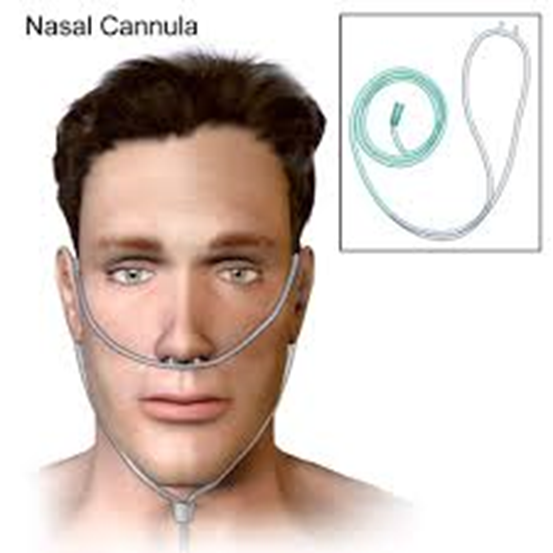A nurse is auscultating a client’s lung sounds and identifies crackles in the left lower lobe. Which intervention should the nurse take first?
Repeat auscultation after asking the client to take a deep breath and cough.
Instruct the client to limit fluid intake to less than 2,000 mL/day.
Place the client on bed rest in semi-Fowler’s position.
Prepare to administer antibiotics.
The Correct Answer is A
Choice A Reason:
Repeating auscultation after asking the client to take a deep breath and cough is the first intervention the nurse should take. This action helps to clear any secretions or mucus that might be causing the crackles. If the crackles persist after the client coughs, it indicates that the sounds are likely due to fluid in the lungs, which requires further assessment and intervention. This step ensures that the nurse accurately identifies the cause of the crackles before proceeding with other interventions.
Choice B Reason:
Instructing the client to limit fluid intake to less than 2,000 mL/day might be appropriate in cases of fluid overload or heart failure, but it is not the first intervention. The nurse needs to confirm the cause of the crackles before making any recommendations about fluid intake. Limiting fluid intake without proper assessment could lead to dehydration and other complications.
Choice C Reason:
Placing the client on bed rest in semi-Fowler’s position can help improve lung expansion and oxygenation by reducing pressure on the diaphragm. However, this is not the first intervention. The nurse should first determine if the crackles are due to secretions that can be cleared by coughing. Semi-Fowler’s position is beneficial for patients with respiratory distress, but it does not address the immediate need to reassess lung sounds.
Choice D Reason:
Preparing to administer antibiotics is not the first intervention. Antibiotics are used to treat infections, and the nurse needs to confirm whether the crackles are due to an infection or another cause before administering medication. Immediate administration of antibiotics without proper assessment could lead to inappropriate treatment and antibiotic resistance.
Nursing Test Bank
Naxlex Comprehensive Predictor Exams
Related Questions
Correct Answer is C
Explanation
Choice A Reason:
Open the client’s visual acuity using a Snellen chart is incorrect. This action assesses cranial nerve II (optic nerve), which is responsible for vision. The Snellen chart is used to measure visual acuity, not the function of cranial nerve VI
Choice B Reason:
Whisper none of the client’s ears while blocking the other is incorrect. This action assesses cranial nerve VIII (vestibulocochlear nerve), which is responsible for hearing and balance. Whispering tests the auditory function of this nerve.
Choice C Reason:
Ask the client to inspect up is correct. Cranial nerve VI (abducens nerve) controls the lateral rectus muscle, which is responsible for moving the eye outward. Asking the client to look up and outward helps assess the function of this nerve.
Choice D Reason:
Ask the client to smile is incorrect. This action assesses cranial nerve VII (facial nerve), which controls the muscles of facial expression. Smiling tests the motor function of this nerve.
Correct Answer is D
Explanation
Choice A Reason:
“Delivers a low concentration of oxygen” is incorrect because a nasal cannula can deliver varying concentrations of oxygen depending on the flow rate set by the healthcare provider. The concentration can range from low to moderate, typically between 24% to 44%.
Choice B Reason:
“Delivers a constant rate of oxygen” is partially correct but not entirely accurate. While the flow rate can be constant, the key aspect is the specific concentration of oxygen delivered, which is more relevant to the client’s understanding.
Choice C Reason:
“Delivers a high concentration of oxygen” is incorrect because nasal cannulas are generally used for low to moderate oxygen delivery. High concentrations of oxygen are typically delivered through other devices like non-rebreather masks or high-flow nasal cannulas.
Choice D Reason:
“Delivers a constant flow of a specific concentration of oxygen” is correct. This explanation accurately describes how a nasal cannula works. It provides a continuous flow of oxygen at a specific concentration, which is adjusted based on the client’s needs and the healthcare provider’s prescription.

Whether you are a student looking to ace your exams or a practicing nurse seeking to enhance your expertise , our nursing education contents will empower you with the confidence and competence to make a difference in the lives of patients and become a respected leader in the healthcare field.
Visit Naxlex, invest in your future and unlock endless possibilities with our unparalleled nursing education contents today
Report Wrong Answer on the Current Question
Do you disagree with the answer? If yes, what is your expected answer? Explain.
Kindly be descriptive with the issue you are facing.
